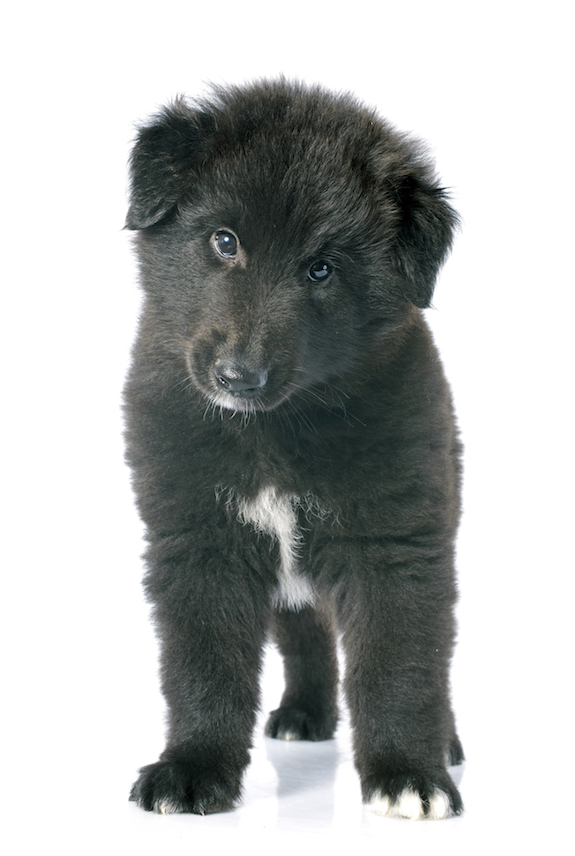
The automaker, Henry Ford, is reported as having once said: “Any color the customer wants, as long as it’s black.” Evidence that Ford actually said this suggests that it’s half true. Initially, the Model T did come in colors: Red, gray, or green. In 1910, one could only get the car in dark green, and in 1911, all the Fords were blue. In late 1912, black was added as an available color, but the black-only policy began in 1914 because that was the year Ford began his new moving assembly line, his real contribution. Limiting the options to one cheap color reduced the time it took to build each car from more than 12 hours to an hour and a half. Using a single color also meant the line didn’t have to stop for workers to clean equipment when paint colors were changed. Black remained the sole color choice until 1926 when some models were offered in green, maroon, or gray with all with black fenders.
That was never the case with the gorgeous Belgian Sheepdog. It really can come in any color as long as it is black. Assembly line breeders may not care about the presence of white on their Belgians, but heritage breeders do, and they know that where white shows up matters if the dog is to be shown or meet the breed standard.
To be clear, we’re discussing the Belgian Sheepdog known elsewhere as the Groenendael. Belgians were registered and shown as one breed in the United States until issues arose over color and inter-variety breeding. In 1959, the AKC gave each variety a separate status, and the long-haired black dogs retained the AKC breed name of Belgian Sheepdog.
In this breed, white spotting on the chest is common, and a small to moderate sized spot is acceptable; it’s thought by some to be residual white with little genetic cause. Several white patches, or patches on the neck or belly, are to be severely penalized. White is also seen on the toes of Belgian Shepherds, but white on all the toes is not acceptable. White tips on the hind toes are allowed, but white tips on the front toes are a fault to be penalized. White between the pads of the feet is also permitted.
Finally, grey or white frosting is permitted on the muzzle of a Belgian, and it’s not necessarily a sign of aging in an adult any more than it is a sign of aging in newborn puppies on whom such frosting is also sometimes seen.
Anyone interested in learning more about color genetics in this breed will want to read Cathy Sheeter’s article on Basic Belgian Groenendael Color Genetics.
Image of a Belgian Sheepdog puppy is from DepositPhoto and illustrates white front toes, allowed, but a fault
